
Learning to play the piano can be overwhelming for beginners, but with the help of beginner piano exercises, playing the piano can be made MUCH simpler and easier.
Table of Contents
- Why Piano Exercises Are Important for Beginners
- Easy Piano Exercises for Beginners
- Piano Finger Exercises for Beginners
- Piano Finger Exercises for Beginners PDF
- The Top 5 Piano Exercises For Beginners by Creative Piano Academy
In this article, we cover why beginners should practice piano exercises and review a wide range of piano exercises for beginners – from piano exercises for adult beginners to piano exercises for kids to simple piano finger exercises to piano exercises for both.
With PDF downloads, YouTube videos, charts, graphics, and descriptions, this article is your one stop resource for Piano Exercises.
Why Piano Exercises Are Important for Beginners
An important lesson that every pianist must learn early on in their musical journey is that they should practice, practice, and practice some more. Playing your scales regularly with disciple and determination ensures success in the future.
When practicing to play the piano as a novice, you should try different beginner piano exercises. Why, you may ask? Here is a bunch of reasons for you to consider piano exercises as a beginner:
Piano Exercises Help You Develop a Piano-Playing Technique
A good technique ensures the ability to play the piano successfully. However, you can’t develop a technique without trying out different piano-playing exercises. So, you shouldn’t give up on practicing and try to develop a better technique each time. Remember that the better the technique, the better music you create, and the more your audience enjoys your music.
Piano Exercises Help You Develop a Musical Ear
When you try various piano exercises, you develop an understanding of tones, melodies, notes, etc. You are able to distinguish bad tones from the good ones and learn the way to create the right emotions by arranging the right notes together. You steadily and gradually develop a sense of good music and the technique to develop pleasing music.
Piano Exercises Boost Your Confidence
When starting with piano, beginners may lack confidence. Therefore, at this stage, it is important to boost their confidence so that they become better students. Knowing your scales well will make you feel confident about your piano playing ability. So many exercises focus on playing scales on the piano. Learning how to play these scales will make piano playing easier and smoother for you.
Piano Exercises Help Build Muscle Memory
Practicing with short intervals can increase your muscle memory. Make sure to practice slowly as it is the best way for your brain and muscle to learn. When you frequently practice a movement, you change the course of how your brain reacts to these movements. This, in turn, leads to quicker and repetitive motions.
The only way to develop muscle memory is to practice different finger and hand movements. Ideally, you should practice twice a day.
Piano Exercises Help You Master the Piano
You can’t reach piano mastery unless you have a grip on basic techniques. Once you have acquired the basic piano skills and techniques, only then can you pick up greater piano challenges and attain piano mastery!
Easy Piano Exercises for Beginners
The Claw Exercise
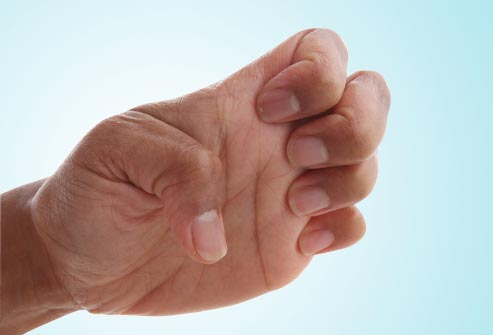
This exercise is also known as a solid claw. In this exercise, you need to make a claw shape with your first, third, and fifth fingers and place them down on the C chord. The trick is to put maximum tension on all three fingers to get a firm grip on them. With the maximum tension in your fingers, slowly play two octaves scale accented in twos. Do this for 10 to 15 minutes to fully engage and exercise your flexor muscles.
The Contrary Motion Scale Exercise
While this exercise may sound complicated, it is super simple. To play this scale, you need to put your thumb on Middle C. Next, play the C scale “up” with your right hand and “down” with your left hand. As you continue playing the scale, you will need to play F# major chord with your right hand while playing A with your left.
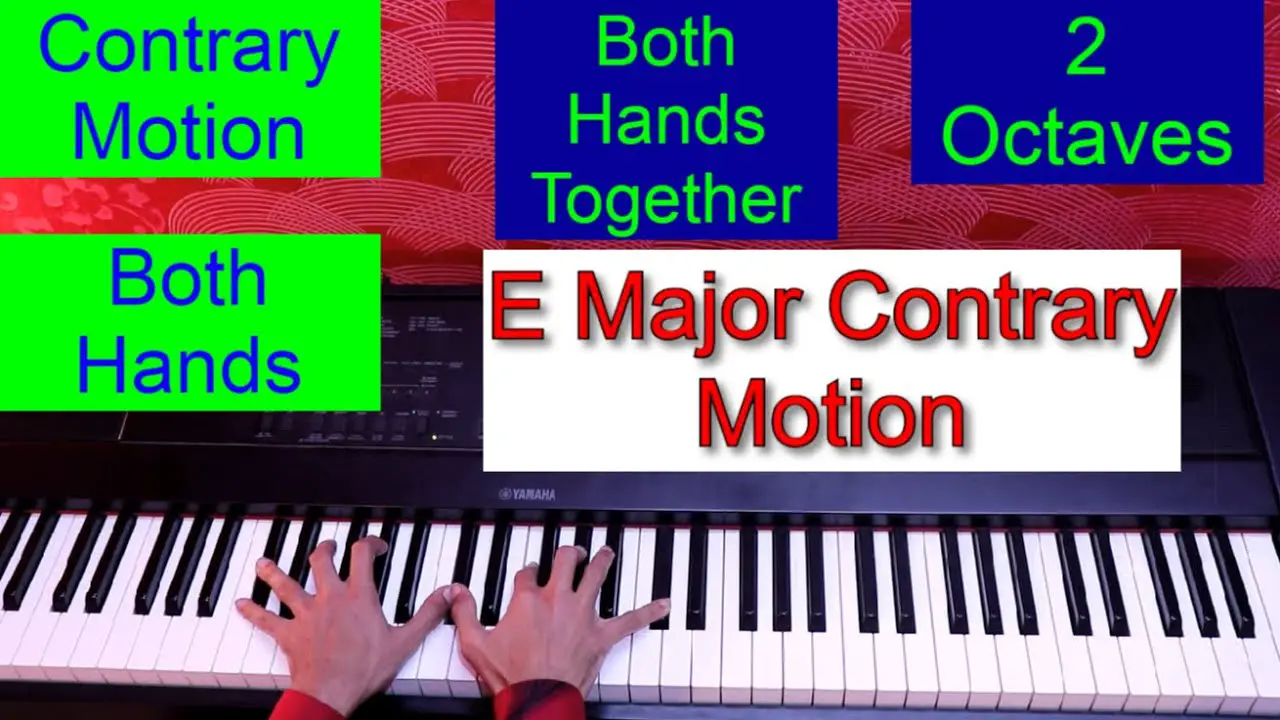
This exercise is easier for most beginners because the fingering is the same for both hands.
The Five Finger Scale Exercise
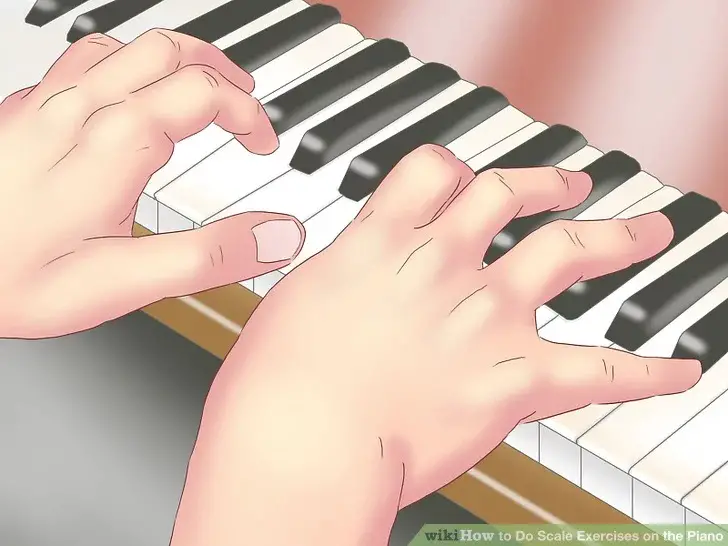
In this exercise, you will first play a Penta scale, then broken 3-note tonic chord, and a blocked 3-note tonic chord.
When playing the Penta scales, you will use 1-2-3-4-5-4-3-2-1 for the right hand while 5-4-3-2-1-2-3-4-5 for the left hand.
Doing so with both the hands at the same time can be a challenge at first, but you will get the hang of it as you practice along. For the tonic chord, use 1, 3, and 5 only.
Arpeggios or a Broken Chord Exercise
When practicing an arpeggio, start out at a moderate pace. Go faster only when you are comfortable playing at a specific speed. You will have to play 1, 2, 3, and 5 notes with your right hand while 5, 4, 2, and 1 with left fingers. Play these two different notes simultaneously to form a specific melody.
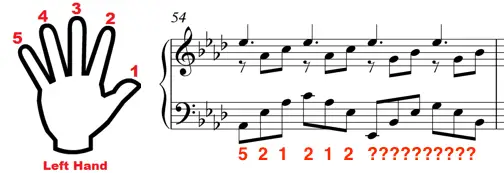
If you master the art of playing minor and major scales first, you will have no trouble playing the broken chords.
For easier and simpler piano exercises for beginners, click here.
Piano Finger Exercises for Beginners
5-Note Pentascales Exercise
This is a fairly easy exercise that will take no time for you to master it. In this finger exercise, you will need to play down one finger per note, C-D-E-F-G. Try various dynamic changes using your hand muscles rather than your arms or shoulders.
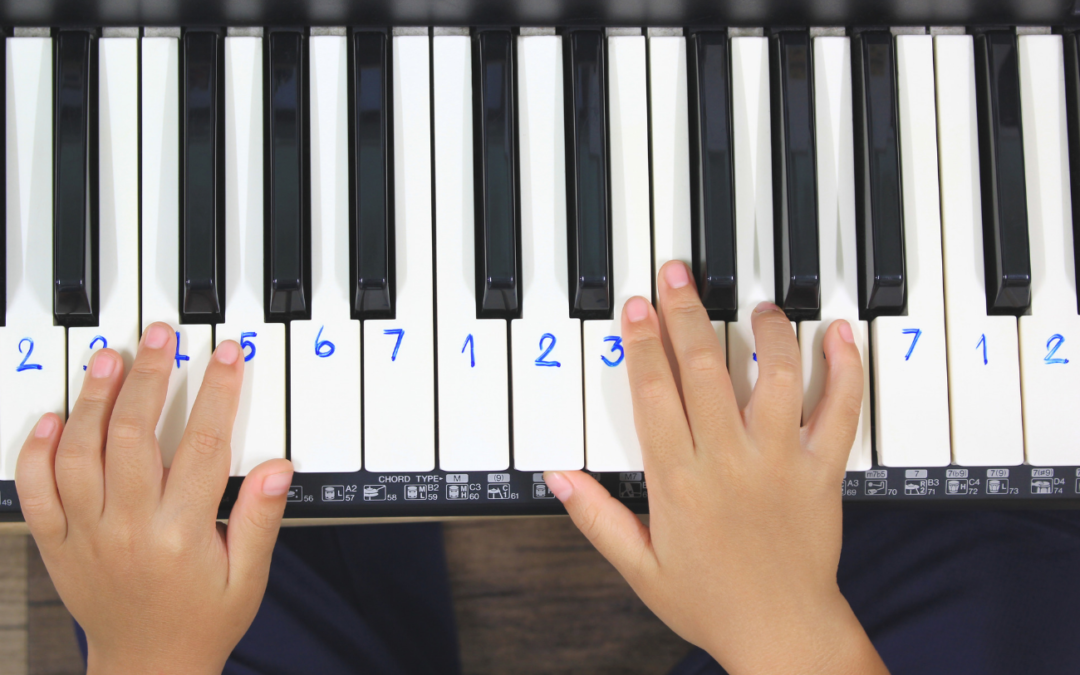
Ascending and Descending Pentascales
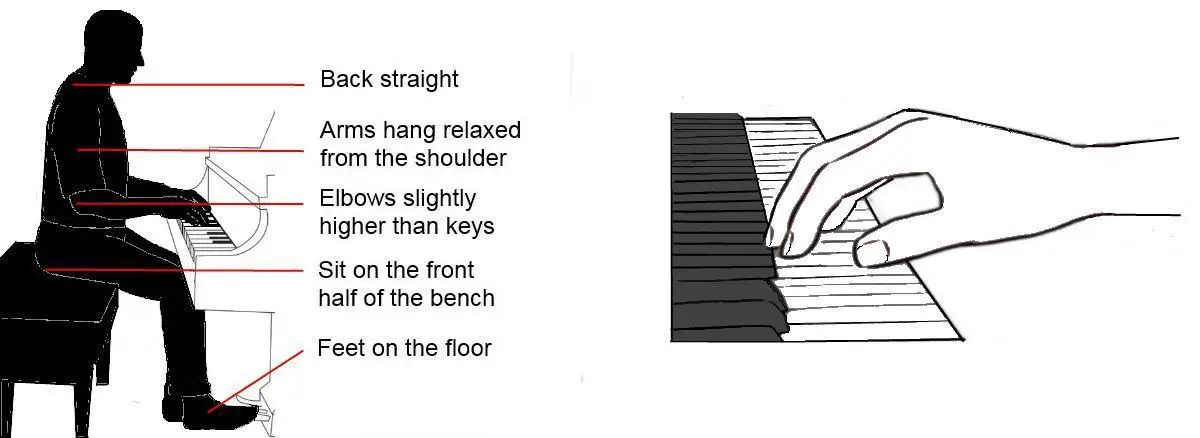
Once you have mastered the first exercise, you should try this one next. Play an ascending and descending pentascale from the lowest to highest fingers and from the highest to lowest fingers (respectively) with both your hands at the same time.
The Major Scale Finger Twist
In this exercise, you need to play the first note, miss the second, and play the third. Of all the three notes of your scale, you miss the middle note.
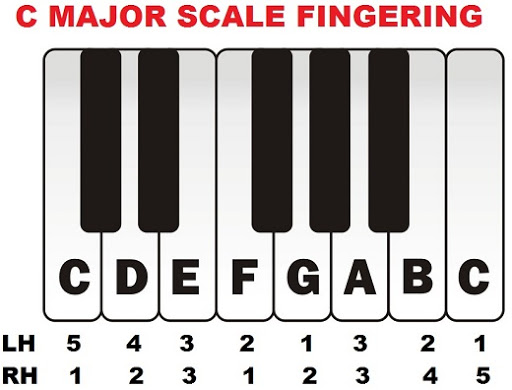
Legato and Staccato

Legato means playing long notes, while staccato means playing short notes. To play staccato, you will need to press a staccato note and release it immediately. However, when playing legato, you will need to keep your finger pressed on the legato note and keep going until you have played all the legato notes on the piano keyboard.
Some easy-to-follow video tutorials for piano finger exercises are:
Piano Finger Exercises for Beginners PDF
All Piano Exercises – 240 Piano Finger Exercise In All Keys

